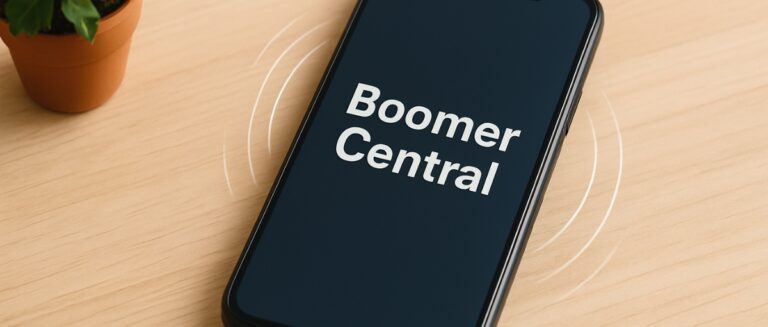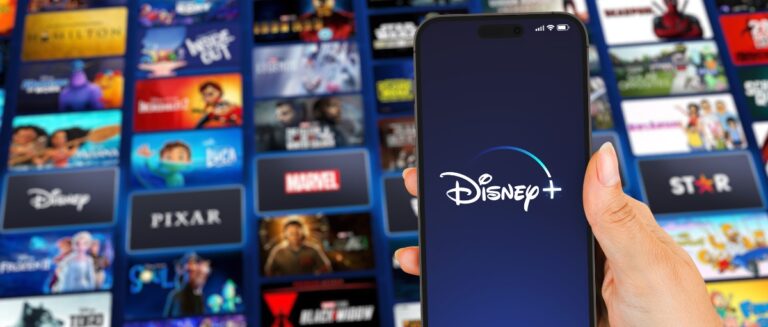IIn today’s digital age, internet access is no longer a luxury but a necessity. Staying connected online is crucial for seniors to maintain social connections, engage with the world, and ensure safety.
Nearly half (49%) of social media users use it to stay in touch with current friends and family members. However, with the rising costs of internet services, many older adults on fixed incomes struggle to afford this essential tool.
Did you know that while 75% of seniors aged 65 and older use the internet, nearly 20 million still lack access due to financial constraints?
The good news is that there are government programs and internet service provider discounts designed specifically to help seniors get online without breaking the bank.
We’ll look into the available options for free or low-cost internet, including the Lifeline Program, the Affordable Connectivity Program (ACP), and discounts from popular providers like Verizon, AT&T, and Xfinity. We’ll also provide practical tips for choosing the best internet plan, accessing the internet on your phone, and staying safe online.
Government Programs for Free or Low-Cost Internet
Government programs providing free or low-cost internet aim to bridge the digital divide and ensure seniors get access to essential online resources.
Lifeline Program
The Lifeline Program is a federal initiative to help low-income individuals, including seniors, afford phone and internet services. Eligible households and seniors can receive a monthly discount of $9.25 on their internet service by participating in this program.
To qualify for Lifeline, seniors must meet one of the following criteria:
- Have an income at or below 135% of the Federal Poverty Guidelines.
- Participate in one or more of the following assistance programs:
- Supplemental Nutrition Assistance Program (SNAP)
- Medicaid
- Supplemental Security Income (SSI)
- Federal Public Housing Assistance (FPHA)
- Veterans Pension and Survivors’ Benefit
To apply for Lifeline, follow these steps:
- Visit the Lifeline National Verifier website.
- Create an account and fill out the online application.
- Provide proof of eligibility, such as income documents or participation in qualifying assistance programs.
- Select a participating internet service provider in your area.
- Start receiving your monthly discount.
Affordable Connectivity Program (ACP)
The Affordable Connectivity Program (ACP) is another federal initiative that helps low-income households, including those with seniors, pay for internet service. Eligible participants can receive a discount of up to $30 monthly on their internet bill.
To qualify for ACP, seniors must meet one of the following eligibility provisions:
- Have an income at or below 200% of the Federal Poverty Guidelines.
- Participate in one or more of the following assistance programs:
- Lifeline
- Supplemental Nutrition Assistance Program (SNAP)
- Medicaid
- Supplemental Security Income (SSI)
- Federal Public Housing Assistance (FPHA)
- Veterans Pension and Survivors Benefit
To apply for ACP, follow these steps:
- Visit the ACP website.
- Fill out the online application or print and mail the application.
- Provide proof of eligibility, such as income documents or participation in qualifying assistance programs.
- Select a participating internet service provider in your area.
- Start receiving your monthly discount.
Combining Lifeline and ACP Benefits
Seniors who qualify for both Lifeline and ACP can combine the benefits to save even more on their monthly internet costs. By taking advantage of both programs, eligible seniors can receive a total discount of up to $39.25 per month on their internet service.
6 Internet Service Provider Discounts for Seniors
In addition to government programs, many internet service providers offer their own discounts for seniors. These internet senior discounts can help older adults save money on their monthly internet bills and make it easier to stay connected.
Verizon Forward Program
The Verizon Forward Program offers free or discounted internet access to qualifying individuals, including seniors. Seniors can get free internet service of up to 300 Mbps, and faster plans are available at a discounted rate.
To qualify for the Verizon Forward Program, seniors must first be approved for the Affordable Connectivity Program (ACP), which provides free wireless routers and does not require an annual contract.
AT&T Access Program
The AT&T Access Program offers discounted internet for low-income seniors in eligible households, including those participating in the Supplemental Security Income (SSI) program. AT&T also offers plans that work with the Affordable Connectivity Program (ACP), allowing free internet access, or free wifi for seniors who qualify.
In addition to discounted internet, AT&T provides discounts on phone plans for veterans, which can help seniors save even more on their monthly bills.
Xfinity Internet Essentials
Xfinity’s Internet Essentials program offers low-cost internet service to eligible low-income households, including seniors who receive Supplemental Security Income (SSI). The program provides internet speeds up to 50 Mbps for just $9.95 per month, with no credit check, installation fee, or contract required.
Participants in the Internet Essentials program also have the option to purchase a low-cost computer for just $149.99 and access free digital literacy training.
Other Provider Discounts
Several other internet service providers offer discounts for internet for low-income seniors and households. Some of these include:
Be sure to check with providers in your area to see if they offer any special internet senior discounts or programs.
Tips for Choosing the Best Internet Plan
When selecting an internet plan, it’s essential to consider your specific needs and budget. Keep these tips in mind to help you choose the best plan for your situation:
- Assess your internet speed needs: Consider how you use the internet and how many devices will be connected. A lower-speed plan may suffice if you primarily use the internet for browsing, email, and social media. However, high-speed internet plans may be necessary if you stream video content or have multiple devices in your household.
- Consider customer service quality: Look for providers with a reputation for excellent customer service. Read reviews and ask friends or family members about their experiences with different providers. Reliable customer support can be invaluable if you encounter technical issues or have questions about your service.
- Choose a reliable connection type: If available in your area, opt for a cable or fiber-optic connection, as these tend to be more reliable than satellite or DSL. A stable connection will ensure you stay connected without frequent interruptions or slowdowns.
- Watch out for hidden fees: Carefully review any contracts or agreements before signing up for a senior’s internet plan. Look for hidden fees, such as equipment rental charges, installation fees, or early termination penalties. Make sure you understand the total monthly cost of the plan, including any taxes or surcharges.
Accessing the Internet on Your Phone
Smartphones can be an excellent tool for staying connected on the go. Here’s how to access the internet on your phone and conserve data:
- Smartphones and data plans: Most smartphones can connect to the Internet using cellular data. When selecting a phone plan, consider how much data you’ll need based on your internet usage habits.
- Connecting to Wi-Fi: Whenever possible, connect your phone to a Wi-Fi network to avoid using your cellular data. To connect to Wi-Fi at home, set up a wireless router and enter the network password on your phone. Many public places, such as libraries, coffee shops, and restaurants, also offer free Wi-Fi.
- Tips for conserving data: To help conserve your cellular data, use Wi-Fi whenever possible, avoid streaming video content when not on Wi-Fi, and adjust your phone’s settings to limit background data usage for apps.
Online Safety and Avoiding Scams
As more seniors access the internet, it’s crucial to be aware of potential online scams and take steps to protect yourself. Here are some common scams to watch out for and tips for staying safe online:
- Common scams targeting seniors: Be cautious of tech support scams, where scammers pose as technology company representatives and offer to fix non-existent computer problems. Phishing attempts, in which scammers try to trick you into revealing personal information, and online dating scams are also common. Seniors are often the target for these scammers.
- Tips for staying safe online: Use strong, unique passwords for each of your online accounts. Be cautious about sharing personal information online, and never send money to someone you’ve only met online. Keep your social media accounts private, and be selective about accepting friend requests. Install and maintain antivirus software on your devices to protect against malware.
- What to do if you suspect a scam: If you suspect a scam has targeted you, don’t engage with the scammer. Report the incident to the appropriate authorities, such as the Federal Trade Commission (FTC) or local law enforcement. Contact your bank and credit card companies immediately if you’ve provided personal or financial information.
Staying Connected in the Digital Age
In today’s world, internet access is essential for seniors who want to stay connected with loved ones, access important resources, and engage with their communities. Three-quarters of seniors who use the internet do so daily. By taking advantage of government programs, internet service provider discounts, and practical tips for choosing the best plan and staying safe online, seniors can enjoy the many benefits of the digital age without breaking the bank.
Remember, resources are available to help you get online and stay connected. Feel free to contact local organizations, such as libraries or senior centers, for assistance in applying for programs or learning new digital skills.
With the right tools and knowledge, you can confidently navigate the online world and seize its opportunities.
Sources
Statista. (2023). Social media usage reasons worldwide. Statista. https://www.statista.com/statistics/715449/social-media-usage-reasons-worldwide/
Pew Research Center. (2021). Using Social Media to Keep in Touch. Pew Research Center. https://www.pewresearch.org/short-reads/2011/12/22/using-social-media-to-keep-in-touch/
Pew Research Center. (2022). Share of those 65 and older who are tech users has grown in the past decade. Pew Research Center. https://www.pewresearch.org/short-reads/2022/01/13/share-of-those-65-and-older-who-are-tech-users-has-grown-in-the-past-decade/
Buch Funeral Home. (2021). Helping older adults connect with digital devices. Buch Funeral Home. https://www.buchfuneral.com/helping-older-adults-connect-with-digital-devices
Internal Revenue Service. (2023). IRS warns against scams targeting seniors, joins other federal agencies to recognize Special Awareness Day. Internal Revenue Service. https://www.irs.gov/newsroom/irs-warns-against-scams-targeting-seniors-joins-other-federal-agencies-to-recognize-special-awareness-day
California Mobility. (2024). 21 senior technology statistics. California Mobility. https://californiamobility.com/21-senior-technology-statistics/











